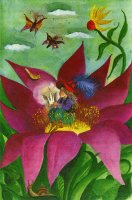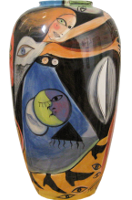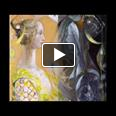
- Main Menu
- Home
- About
The Artist - Annael (Anelia Pavlova)
Other
Experiencing My Art
 The Musical Connection in My Paintings
The Musical Connection in My Paintings
 On Fractality – cast in the form of a children’s story
On Fractality – cast in the form of a children’s story
My unique printmaking technique
Purchasing Information
- Artworks
- Projects
Altar of the Resurrected Sun
A collaborative, multimedia project inspired by the altars of the Renaissance and the Baroque, which can be seen as a representation of the journey of the human soul.
Altar of Archangel Michael
A collection of seven paintings enveloped in a representation of the All-Seeing Eye of God, forming my altar dedicated to Archangel Michael.
Altar of the Holy Spirit
My third altar is a specially arranged collection of paintings relating to the invisible Presence of God in our human lives – in our thoughts, our feelings and our intentions.
Video Series
Videos with my artworks created by collaborators.
- Writings
Poetry
 Poetry in English – a short collection
Poetry in English – a short collection
 Poetry in Bulgarian – a short collection
Poetry in Bulgarian – a short collection
Children’s books
- Find...
Find paintings by classical composer
See all paintings created using the music of a particular composer.
Search the site
Search using Google’s sitesearch feature (e.g. artwork name/title – "painting Musica Nova").
- Browse...
Alphabetical artwork lists
Browse all artworks of a given type in alphabetical order (text format, with links to images).
Quick-links to painting collections
Quick links to oil painting collections in approximate chronological order – see also the Artworks menu and the Oil Paintings page.
1999-2000, 2001, 2002, 2003, 2004, 2005, 2006, 2007, 2008, 2009, 2010, 2011, 2012, 2013, 2014, 2015-2016, 2017-2018, 2019, 2020-2021, 2022, 2023.
- Contact





